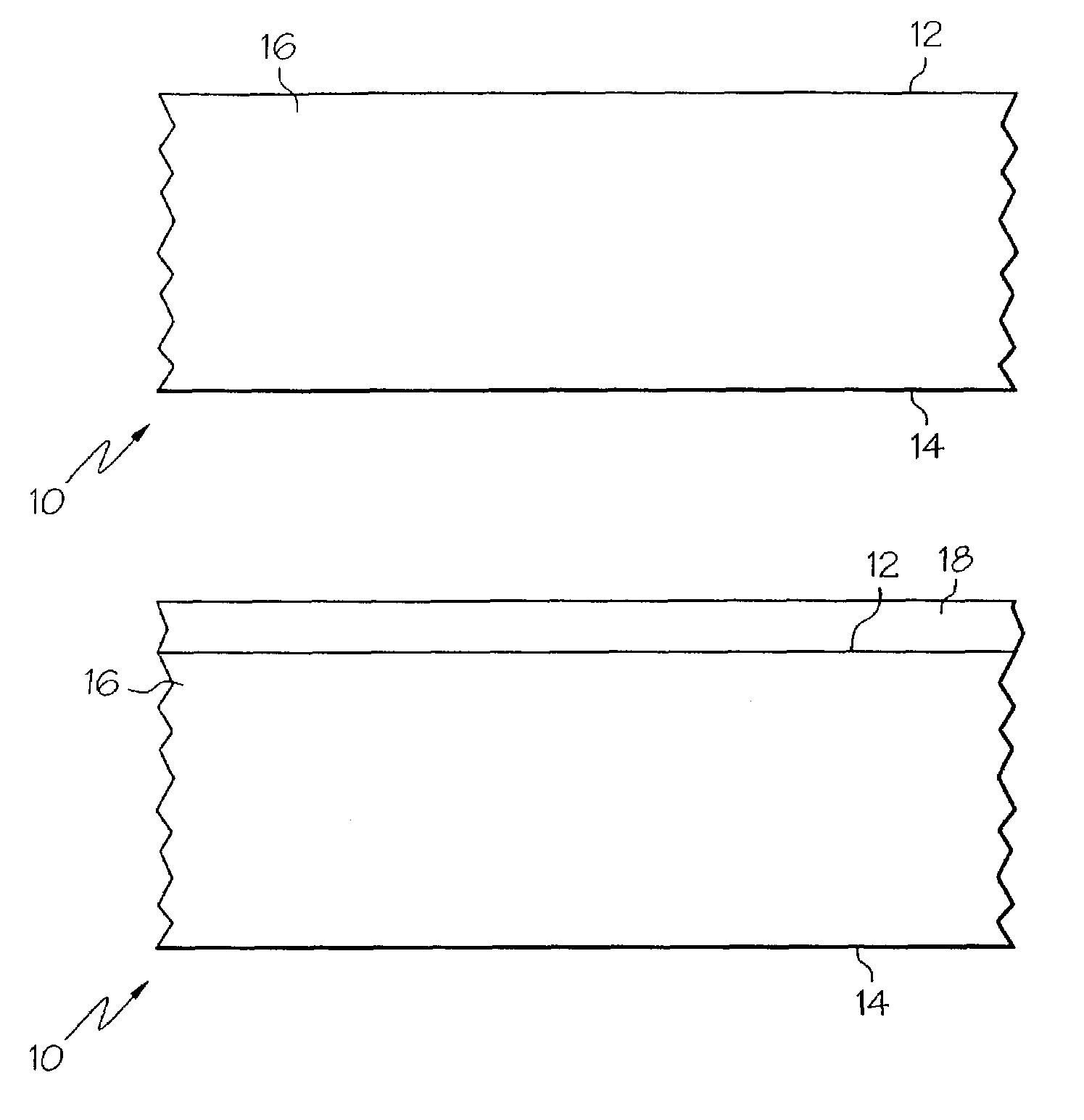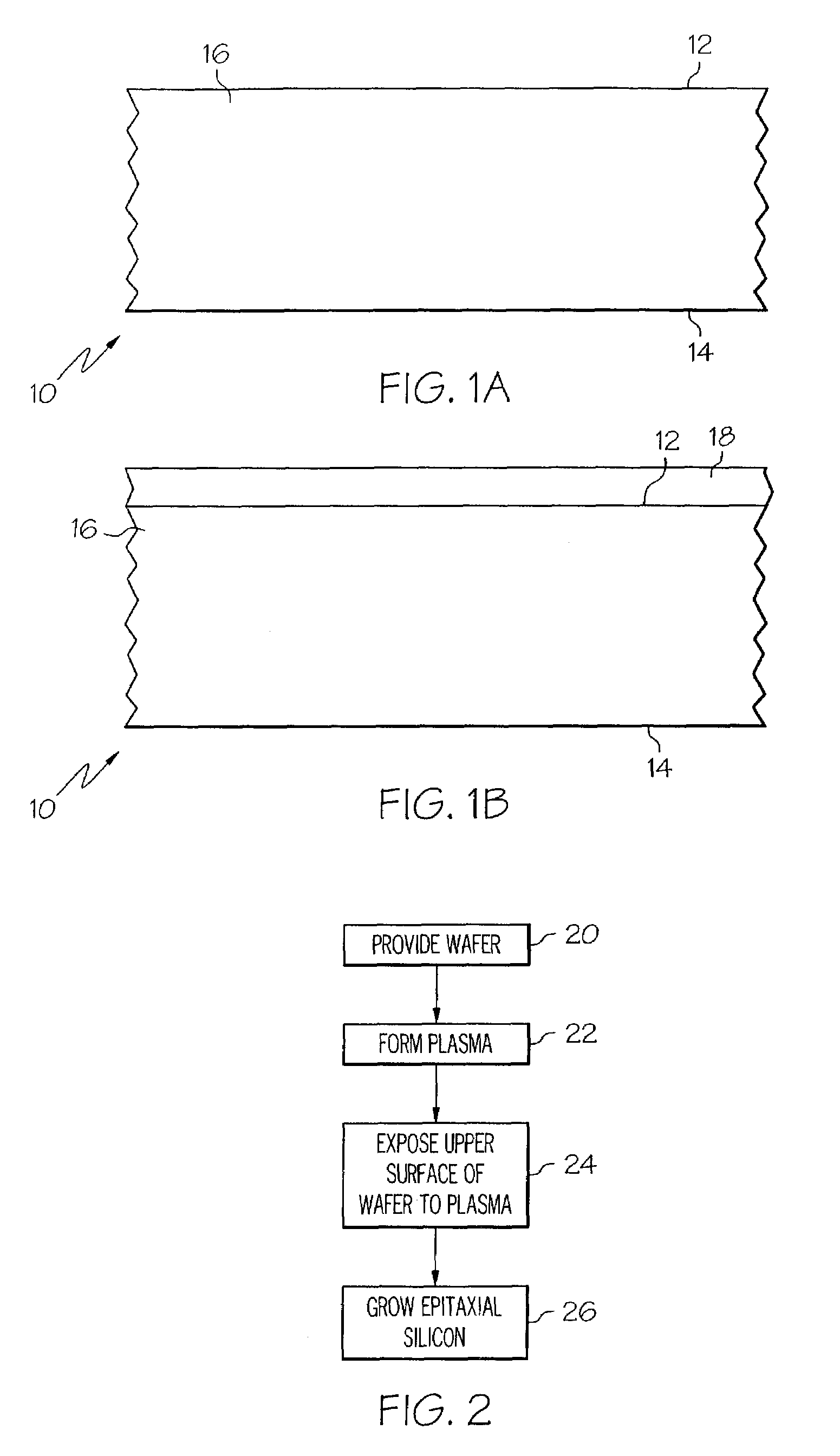Methods for epitaxial silicon growth
- Summary
- Abstract
- Description
- Claims
- Application Information
AI Technical Summary
Benefits of technology
Problems solved by technology
Method used
Image
Examples
example 1
[0026]A wafer having silicon areas and silicon nitride areas on an upper surface was exposed to a RF plasma formed from an SF6 gas flow flowing at 40 sccm. The RF power was 300 W, and the wafer was exposed to the plasma for 60 seconds.
[0027]Epitaxial silicon was subsequently grown on the silicon areas. The epitaxial silicon was grown by a SiH6, Cl2, and H2 gas flow present with a 10−8 Torr background pressure. The growth was continued for between about 5 to about 25 minutes in order to achieve a desired thickness of epitaxial silicon. The nitride areas did not exhibit significant epitaxial silicon growth, and it was apparent that the RF plasma had passivated the surface of the nitride.
example 2
[0028]A wafer having polysilicon areas and silicon nitride areas on an upper surface was exposed to a RF plasma formed from an SF6 gas flow flowing at 40 sccm. The RF power was 300 W, and the wafer was exposed to the plasma for 60 seconds.
[0029]Epitaxial polysilicon was subsequently grown on the silicon areas. The epitaxial silicon was grown by a SiH6, Cl2, and H2 gas flow present with a 10−8 Torr background pressure. The growth was continued for between about 5 to about 25 minutes in order to achieve a desired thickness of epitaxial polysilicon. The nitride areas did not exhibit significant epitaxial polysilicon growth, and it was apparent that the RF plasma had passivated the surface of the nitride.
example 3
[0030]A wafer having silicon areas and silicon oxide areas on an upper surface was exposed to a RF plasma for 60 seconds. The plasma was formed from a 40 sccm gas flow of SF6, and the RF power was 300 W.
[0031]Epitaxial silicon was grown on the silicon areas by a SiH6, Cl2, and H2 gas flow present with a 10−8 Torr background pressure. The growth was continued for between about 5 to about 25 minutes in order to achieve a desired thickness of epitaxial silicon. The epitaxial silicon exhibited a lateral growth rate to vertical growth rate ratio of about 1:4, as measured by comparing the height of the vertical growth to the width of the lateral growth.
PUM
 Login to View More
Login to View More Abstract
Description
Claims
Application Information
 Login to View More
Login to View More - R&D
- Intellectual Property
- Life Sciences
- Materials
- Tech Scout
- Unparalleled Data Quality
- Higher Quality Content
- 60% Fewer Hallucinations
Browse by: Latest US Patents, China's latest patents, Technical Efficacy Thesaurus, Application Domain, Technology Topic, Popular Technical Reports.
© 2025 PatSnap. All rights reserved.Legal|Privacy policy|Modern Slavery Act Transparency Statement|Sitemap|About US| Contact US: help@patsnap.com



